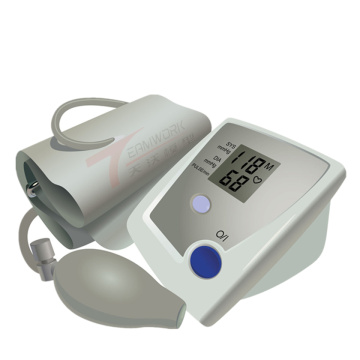Knowledge sharing by Guangdong Shunde Teamwork Model Technology Co., Ltd, whom with over 20 years rapid prototyping experience.
Email: ken@gdtwmx.com
Website: www.gdtwmx.com
Laminated method (LOM)
The LOM method appeared in 1985. Firstly, a layer of foil (such as paper) is laid on the substrate, and then the layered information is cut under the control of the computer with a certain power of infrared laser, and the non-part parts are cut into pieces in a certain grid shape so that After removal, one layer is processed, then a layer of foil is applied and rolled with a hot roller so that the newly laid layer is adhered to the formed body under the action of an adhesive, and then the shape of the layer is cut. This is repeated until processing is completed. Finally remove the chopped excess to get the complete part.
This technology was first used in the RP market. I don't know much about it, but my feeling is a waste of material. The accuracy of molding is not too high. No need for support. Lower production efficiency, lower operating costs, and lower equipment costs. Suitable industries are limited.
Adhesive Bonding (3D-P 3D Printing)
3D-P three-dimensional printing is the use of nozzle spray adhesive selective bonding powder molding. First, the powder feeding mechanism precisely places a thin layer of powder material on the processing platform, and then the inkjet print head sprays a special layer of glue on the powder according to the cross-sectional shape of the layer, and the thin powder sprayed onto the glue is solidified. Then a layer of powder of a certain thickness is laid on this layer, and the print head presses a cross-section to spray the glue. Layers are stacked in this way, from the bottom up, until all the layers of a part are printed. The uncured powder is then removed and a three-dimensional physical prototype is obtained.
This was first developed by the Massachusetts Institute of Technology. Consumables are cheap, general gypsum powder is available, and the molding speed is high. Because the powders are bonded together, the surface is rough and the strength is not high. No need for support. Samples can be molded in full color. Suitable for the industry is also very limited, general education, and landforms, real estate design.
Stereolithography (SLA)
SLA method is the earliest RP technology with the highest commercialization and market share. It uses photosensitive resin as raw material, and computer-controlled ultraviolet laser scans point-by-point on the surface of photosensitive resin according to the information of each layered section of the part, making the resin in the scanned area thin. The layer is photopolymerized to cure and form a thin layer of the part. After the one layer is cured, the table is moved down one layer thick to allow a new layer of liquid resin to be applied to the previously cured resin surface, and then the next layer can be scanned. The newly solidified layer is firmly bonded to the previous layer, and so on until the entire prototype is completed.
This molded product has very high requirements for the storage environment, and the temperature is too high to melt. There are high UV and other constraints, the price of supplies is not cheap! Support is needed for molding, but the surface quality of the molding can be. High precision. High production efficiency, high operating costs, and expensive equipment. Material utilization is about 100%. Suitable for medicine, electronics, cars, shoes, consumer goods, entertainment and more.
Laser Selective Sintering (SLS)
The SLS method uses an infrared laser as an energy source, and most of the modeling materials used are powder materials. During processing, the powder is first preheated to a temperature slightly below its melting point, and the powder is then leveled by the action of a flattening stick; the laser beam is selectively sintered according to the layered section information under computer control, one layer being completed After the next layer of sintering, all excess powder is removed after sintering, then a sintered part can be obtained. Currently mature process materials are wax powder and plastic powder, and the sintering process using metal powder or ceramic powder is still under research.
In the molding process, because the powder is sintered, there are many powdered objects that contaminate the office space during work. The general equipment needs to be placed in a separate office. In addition, the molded product is an entity that cannot be directly assembled for performance verification. In addition, when the product is stored for too long, it will be deformed due to the release of internal stress. The support is designed to be easily deformed, and the surface quality is general. High production efficiency, high operating costs, and expensive equipment. Energy consumption is usually above 8000 watts. Material utilization is about 100%.
Fused Deposition (FDM)
The FDM law was invented in 1988. The molten material ejected from the nozzle is driven by the XY table, laid on the base plate in a cross-sectional shape, processed layer by layer, and the parts are finally manufactured. Commercial FDM equipment uses a wide range of materials, such as cast paraffin, nylon, thermoplastics, ABS, and others. In addition, multiple nozzles can be used to increase efficiency. At this stage, it has also developed water-soluble support, which has greatly improved the speed and feasibility of post-molding processing.
The molding machine is the largest in the market at present, and the molded instant noodle is of good quality and can be directly assembled and verified for performance. Supplies are PC, ABS, original supplies prices are not cheap. The molded product can support reprocessing. Need to support. The production efficiency is low, the operating costs are generally low, and the equipment costs are low. The overall material utilization rate is about 100%. Applicable medicine, design research and development, teaching and research institutions, aerospace, home appliances and geodesy.






